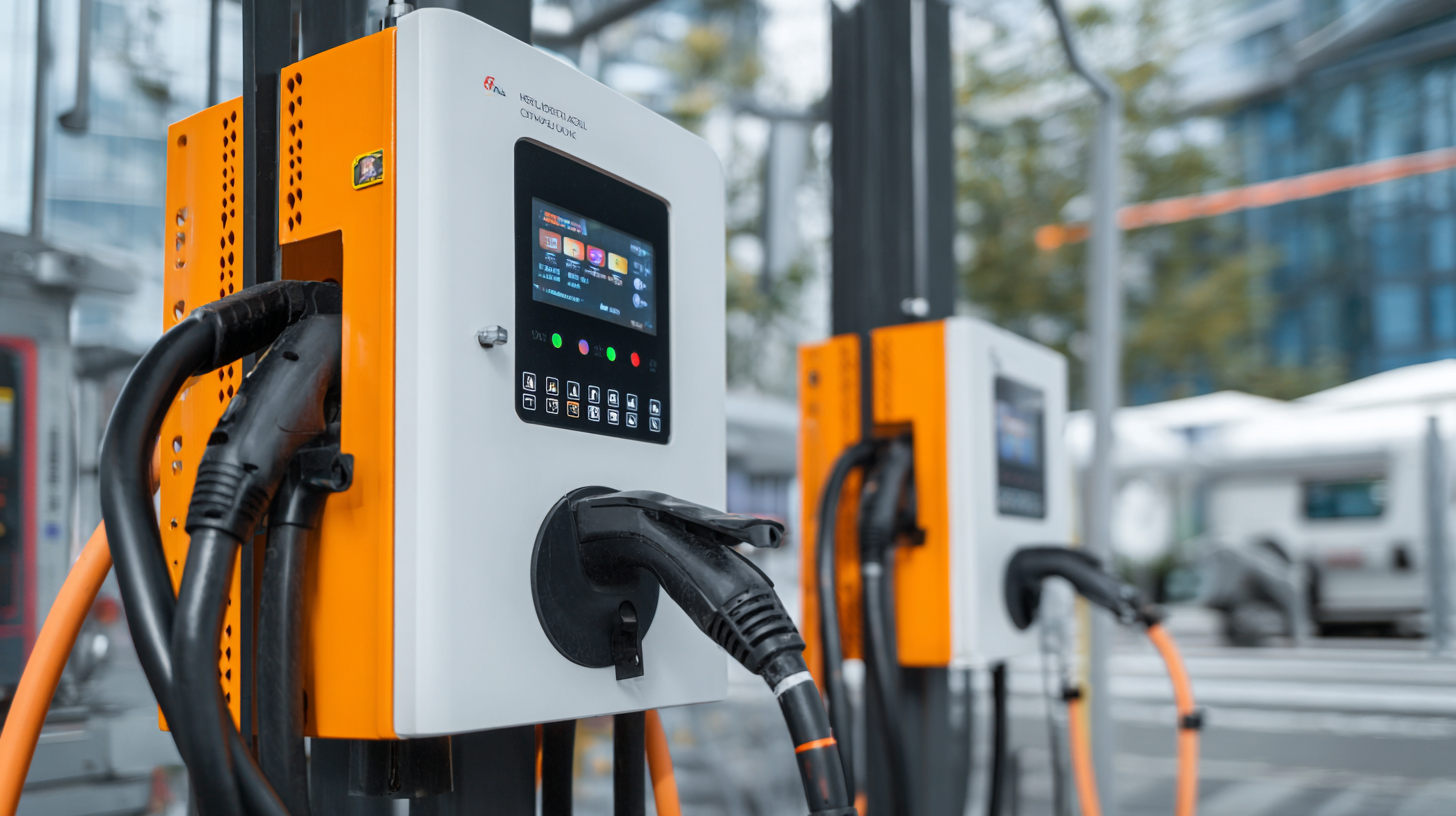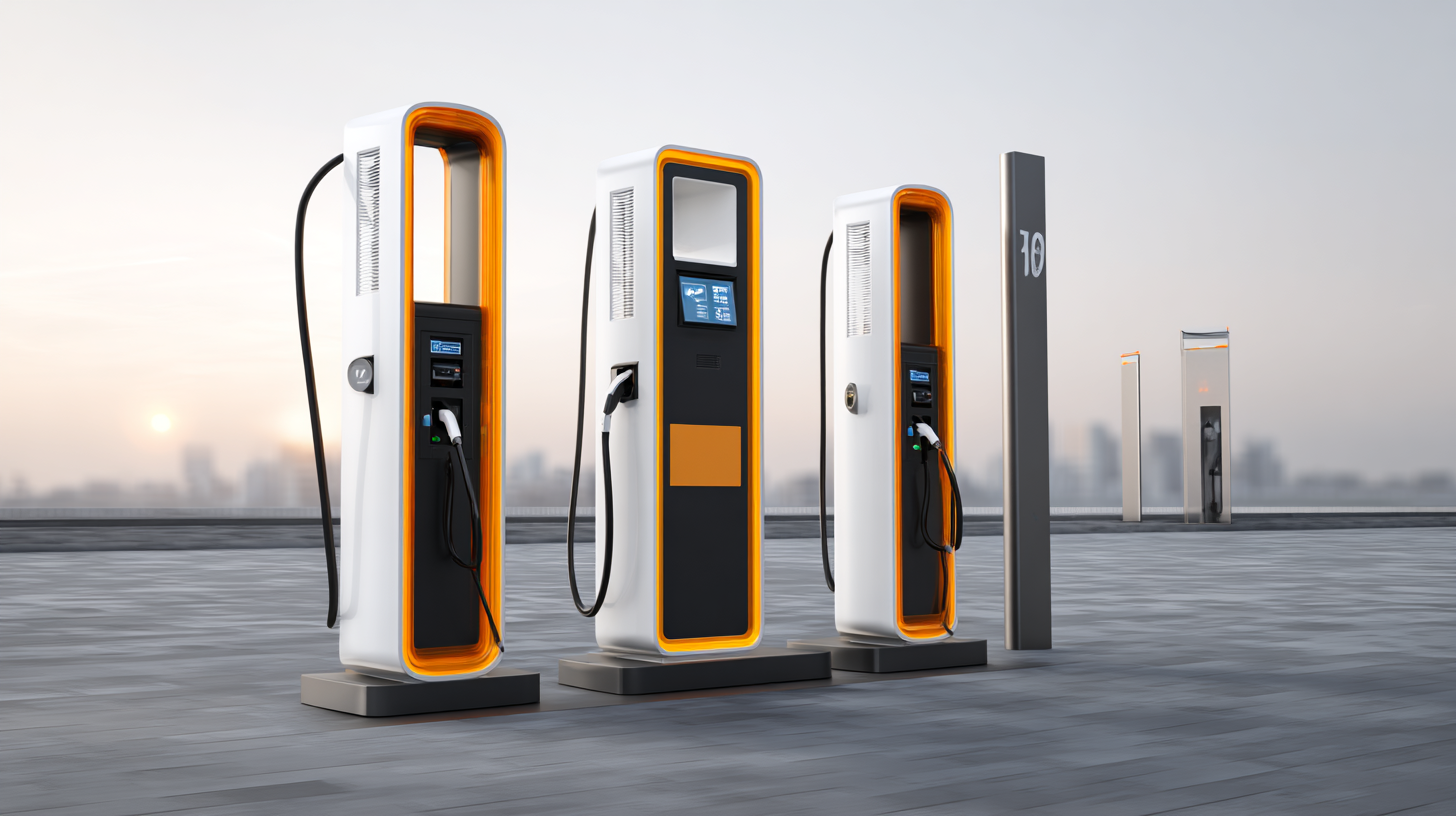As the world continues to transition towards sustainable energy solutions, the technology behind electric vehicle charging is evolving at an unprecedented pace. In this context, AC Charging Pile technology stands at the forefront, revolutionizing how we power our electric vehicles and contribute to a greener future. As we look ahead to 2025, the demand for efficient, affordable, and innovative charging solutions is greater than ever. This blog will explore the latest advancements and alternatives in AC Charging Pile technology, highlighting what makes these innovations essential for the growing electric vehicle market. We will delve into the various types of AC Charging Piles, their functionality, and their potential impact on both consumers and the environment, all while embracing a vision of accessible and sustainable transportation for the future.

As the global demand for electric vehicles (EVs) continues to surge, the development of advanced AC charging pile technology is becoming increasingly critical. According to a report by the International Energy Agency (IEA), EV sales are expected to reach 30% of the global car market by 2025. This forecast drives innovation in charging infrastructure, with a particular focus on enhancing efficiency and user experience.
One of the most significant advancements predicted for AC charging piles is the integration of smart technology. This includes features such as real-time monitoring and dynamic load management, which can optimize energy usage based on grid conditions and user demand. A study by MarketsandMarkets indicates that the smart charging market is expected to grow from $5.6 billion in 2021 to $22.4 billion by 2026, showcasing the potential impact of these innovations. Additionally, modular designs and improved materials are on the horizon, which could reduce installation costs while increasing the lifespan and efficiency of AC charging stations.
These innovative developments will not only make EV charging more accessible but also align with global sustainability goals by promoting renewable energy usage. With this shift, the future of AC charging pile technology appears bright and poised for rapid growth in the coming years.
The future of electric vehicle (EV) charging technology lies in next-generation AC charging solutions that promise to enhance user experience and efficiency. Key features that will define these innovations include faster charging speeds, smarter connectivity, and increased compatibility with various EV models. With advancements in power electronics, new charging piles are being developed to deliver higher power outputs, significantly reducing charging time – a primary concern for EV users.
Incorporating smart technology into charging solutions allows for seamless integration with mobile apps, enabling users to monitor charging status, receive alerts, and even schedule charging during off-peak hours to save on energy costs. Furthermore, the development of modular charging systems ensures that these solutions are not only efficient but also adaptable to the evolving landscape of EV technologies.
**Tip:** To maximize the benefits of next-generation AC charging solutions, always check for software updates on your charging station. Regular updates can improve performance and add new features, ensuring that your charging experience remains cutting-edge. Additionally, consider using public charging networks that offer multiple charging options, as this can provide greater flexibility and convenience for your charging needs.
| Feature | Description | Expected Innovation for 2025 | Benefits |
|---|---|---|---|
| Smart Connectivity | Integration with mobile apps for real-time monitoring and control. | Enhanced user interface and improved connectivity options using IoT. | Increased user engagement and control over charging sessions. |
| Ultra-Fast Charging | Reduces charging time significantly, enabling quicker turnarounds. | Charging speeds reaching up to 350 kW. | Greater convenience for electric vehicle users. |
| Sustainability Features | Utilizes renewable energy sources for charging power. | Incorporation of solar panels or wind energy integration. | Reduced carbon footprint and increase in eco-friendliness. |
| User-Friendly Design | Ergonomic and intuitive interfaces for all user types. | Touchscreen displays with customizable user settings. | Enhanced accessibility and ease of use. |
| Enhanced Safety Protocols | Advanced safety features to protect users and vehicles. | Real-time monitoring and hazard detection systems. | Increased confidence in using charging systems. |
The evolution of AC charging pile technology is critical as we push towards a more sustainable future. According to a report by Allied Market Research, the global electric vehicle (EV) charging infrastructure market is projected to reach $140.66 billion by 2030, growing at a CAGR of 34.7%. This surge is driven by consumer demand for faster, more efficient charging solutions that adhere to environmental standards.
Innovative designs in charging stations, such as those incorporating renewable energy sources and smart grid technology, are becoming more prominent.
In addition to improving operational efficiency, these advancements have significant implications for sustainability. A study from the International Energy Agency (IEA) reveals that transitioning to electric vehicles could reduce global CO2 emissions by up to 4.3 gigatons annually by 2030, assuming adequate charging infrastructure is in place. By embracing innovative AC charging technologies that minimize energy loss and maximize renewable energy usage, we can lay a strong foundation for the future of transportation. The push towards efficient charging solutions not only meets the current demand of an expanding EV market but also aligns with global sustainability goals, making significant strides toward a greener future.
As we approach 2025, the landscape of AC charging technology is evolving dramatically, driven by the integration of smart technology. This shift not only enhances user experience but also addresses the growing demand for efficient and reliable electric vehicle (EV) charging systems. According to a recent report by the Global EV Outlook, the number of electric vehicles on the road is expected to exceed 300 million by 2030, underscoring the urgent need for robust charging solutions. Smart AC charging piles, equipped with advanced features such as real-time monitoring and automated scheduling, can significantly improve the charging experience for users.

The incorporation of IoT and AI into AC charging systems enables users to manage their charging sessions remotely through mobile applications. These innovations allow for seamless interactions, such as automatic notifications when charging is complete or reminders to plug in during off-peak hours, ultimately optimizing energy consumption. A study by the International Energy Agency (IEA) forecasts that smart charging can increase grid efficiency by up to 30%, highlighting the benefits for both consumers and energy providers. As we embrace these innovative alternatives, the synergy between user-centric features and smart technology will undoubtedly define the future of AC charging solutions.
As the electric vehicle (EV) market continues to grow, the development of AC charging infrastructure is becoming increasingly vital. According to a recent report from the International Energy Agency, the number of public charging points worldwide is expected to reach over 3 million by 2025, with a significant portion being AC chargers. Regulatory trends are playing a pivotal role in shaping this landscape; governments are implementing stricter emissions targets and providing incentives for EV adoption. For instance, the European Union aims to have 1 million public charging stations by 2025, leading to accelerated investment in AC charging pile technology.
To optimize the implementation of this infrastructure, charging network operators should stay informed about evolving regulatory standards. One tip is to engage with local governments early in the planning process to ensure compliance with new regulations and to leverage potential funding opportunities. Furthermore, as demand grows, operators should consider adopting smart charging solutions that integrate with renewable energy sources. This approach not only helps reduce costs but also aligns with sustainability goals set by emerging regulations.
Another essential aspect is user experience. Providing clear information on charging locations and estimated wait times can enhance user satisfaction and increase utilization rates. Deploying mobile apps that allow for seamless reservations and payments may further attract users, fostering a more robust AC charging network as outlined by recent industry studies.

